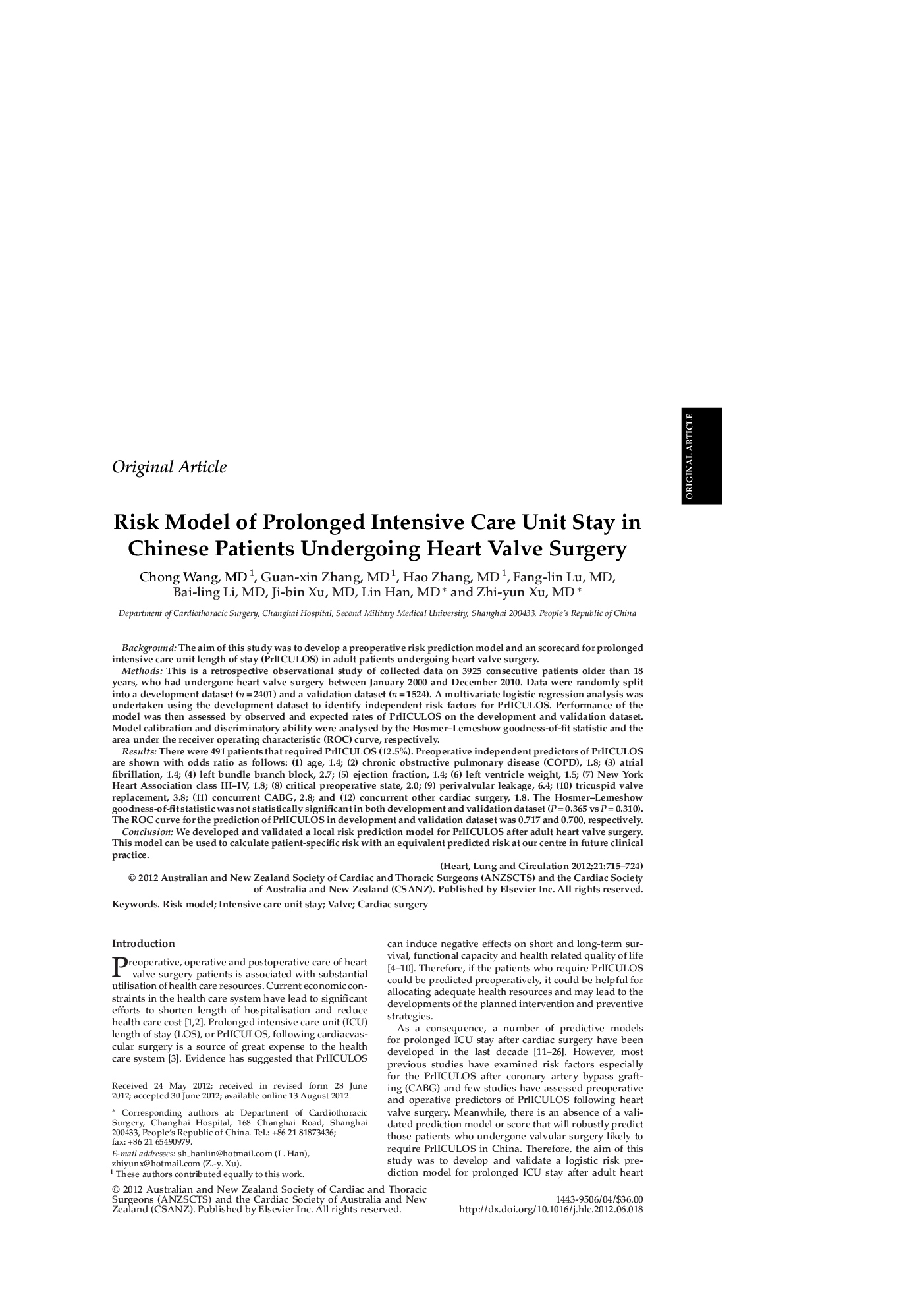| Article ID | Journal | Published Year | Pages | File Type |
|---|---|---|---|---|
| 2919228 | Heart, Lung and Circulation | 2012 | 10 Pages |
BackgroundThe aim of this study was to develop a preoperative risk prediction model and an scorecard for prolonged intensive care unit length of stay (PrlICULOS) in adult patients undergoing heart valve surgery.MethodsThis is a retrospective observational study of collected data on 3925 consecutive patients older than 18 years, who had undergone heart valve surgery between January 2000 and December 2010. Data were randomly split into a development dataset (n = 2401) and a validation dataset (n = 1524). A multivariate logistic regression analysis was undertaken using the development dataset to identify independent risk factors for PrlICULOS. Performance of the model was then assessed by observed and expected rates of PrlICULOS on the development and validation dataset. Model calibration and discriminatory ability were analysed by the Hosmer–Lemeshow goodness-of-fit statistic and the area under the receiver operating characteristic (ROC) curve, respectively.ResultsThere were 491 patients that required PrlICULOS (12.5%). Preoperative independent predictors of PrlICULOS are shown with odds ratio as follows: (1) age, 1.4; (2) chronic obstructive pulmonary disease (COPD), 1.8; (3) atrial fibrillation, 1.4; (4) left bundle branch block, 2.7; (5) ejection fraction, 1.4; (6) left ventricle weight, 1.5; (7) New York Heart Association class III–IV, 1.8; (8) critical preoperative state, 2.0; (9) perivalvular leakage, 6.4; (10) tricuspid valve replacement, 3.8; (11) concurrent CABG, 2.8; and (12) concurrent other cardiac surgery, 1.8. The Hosmer–Lemeshow goodness-of-fit statistic was not statistically significant in both development and validation dataset (P = 0.365 vs P = 0.310). The ROC curve for the prediction of PrlICULOS in development and validation dataset was 0.717 and 0.700, respectively.ConclusionWe developed and validated a local risk prediction model for PrlICULOS after adult heart valve surgery. This model can be used to calculate patient-specific risk with an equivalent predicted risk at our centre in future clinical practice.
